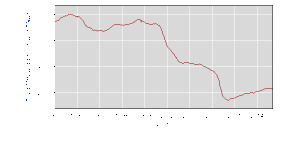The Problem of the Liberal Elites Part 3 on Trade
Paul Krugman has been walking back his nearly unbridled support of trade treaties lately. In this blog post, he says “I think I’ve never assumed away the income distribution effects.” Those distributional effects are, he says, predicted by the standard models. In the Foreign Affairs article I’ve discussed in the last two posts in this series, he must be referring to his statement that NAFTA will “…probably lead to a slight fall in the real wages of unskilled U.S. workers”. Here’s part of of his explanation:
When a country with a highly skilled labor force increases its trade with a country in which skill is at a greater premium, it can expect a decline in the real wages of its own unskilled workers. As a matter of economic principles, we should expect to see at least some adverse impact of NAFTA on the wages of American manual workers.
All the evidence suggests, however, that this effect will be extremely small. For one thing, since the existing barriers to trade between the United States and Mexico are already quite low, it is hard to see how removing them could have any dramatic effect on wage rates.
At first, the evidence did better, but then the trade explosion with China began. That resulted in enormous job losses directly and indirectly in the US, The rest of what happened is that real wages of both the working class and the middle class stagnated, and substantially all the gains went to a tiny minority of rich people. I don’t see that prediction in this or any of Krugman’s other writings. In fact, inequality plays no role in any of these early works of Krugman or, for that matter, any other liberal or conservative economists.
As part of his walk-back on free trade, Krugman says this:
Furthermore, as Mark Kleiman sagely observes, the conventional case for trade liberalization relies on the assertion that the government could redistribute income to ensure that everyone wins — but we now have an ideology utterly opposed to such redistribution in full control of one party, and with blocking power against anything but a minor move in that direction by the other.
Here’s what Kleiman said:
The Econ-101 case for free trade is straightforward: Trade benefits those who produce exports and those who consume imports (including producers who use imported goods as inputs). It hurts the producers of goods which can be made better or more cheaply abroad. But the gains to the winners exceed the gains to the losers: that is, the winners could make the losers whole and still come out ahead themselves. Therefore, trade passes the Pareto test.
[Yes, this elides a number of issues, including path-dependency in increasing-returns and learning-by-doing markets on the pure-economics side and the salting of actual agreements with provisions that create or protect economic rents on the political-economy side. It also ignores the biggest gainers from trade: workers in low-wage countries, most notably the Chinese factory workers whose parents were barefoot peasants.]
So, the key point in this analysis is the Pareto test. This is the idea that any change in any change in economic allocation that makes one person or group better off without hurting anyone else is good. Suppose the 1% has 90% of the wealth of a society, and the 99% has the rest. If you try to take some of the wealth from the 1% to balance things out a bit, you violate the Pareto test, because the 1% is made worse off by loss of a bit of wealth, even though the bulk of society is better off. That principle sounds like a justification for the way the rich whine about taxation. It also sounds like a lousy way to run a society.
The Pareto test also implies that if a change benefits one group and another group loses, then if the winners pay enough to make the losers whole financially, then it should be just fine. That’s what Kleiman means when he talks about the government redistributing the benefits of trade. So, suppose the allocation of the social goods in a society gives the 1% all the gains but the 99% all lose. Then we redistribute money from the 1% to the 99%. Krugman and the rest of the liberal elites accepted this as a justification for the damage which their models predicted free trade would inflict on the working class. This astonishing idea is common in the economist tribe, even among more conservative economists.
I hardly need point out that neither political party ever contemplated any reallocation of gains either on the expected losses from NAFTA (small decrease in real wages of low-skilled workers), or on the massive losses that arose from trade with China. Krugman didn’t mention this argument in his 1993 Foreign Affairs article. Congress did set up a small program to support the hundreds of thousands who lost jobs because of NAFTA, but those funds were quickly exhausted, did little to ameliorate the problem and never reached anyone who didn’t get a job because US corporate executives built new advanced manufacturing facilities in China and Taiwan. And there was no compensation for anyone whose job was an indirect casualty of the closing of US factories, and no compensation to communities wrecked by plant closures, or forced to bid tax concessions and more to keep jobs.
So, how did things turn out so badly when the great brains all told us it would all work out on average?


![[image: Sarah G via Flickr]](https://www.emptywheel.net/wp-content/uploads/2016/02/2949220013_d17943cf23_z-300x201.jpg)
![[image: Eugenia Vlasova via Flickr]](https://www.emptywheel.net/wp-content/uploads/2016/02/Pacski_EugeniaVlasova-Flickr-300x200.jpg)